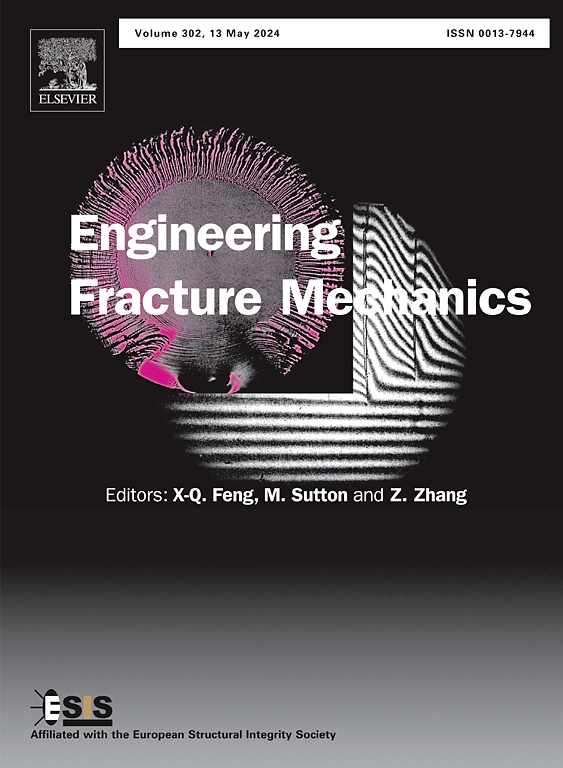Theoretical understanding of fracture toughness improvement in carbon nanotube-coated fiber/epoxy composites: A multiscale study
IF 4.7
2区 工程技术
Q1 MECHANICS
引用次数: 0
Abstract
In this study, the mechanisms underlying fracture toughness improvement in carbon nanotube (CNT)-coated fiber/epoxy composites were investigated using multiscale analysis. To capture the macroscopic toughening mechanisms (such as crack path deflection induced by the fiber), a phase field fracture simulation was employed. A multiscale fracture model incorporated microscopic toughening mechanisms (including interfacial debonding, subsequent plastic nano-void growth, and pull-out of the nanotubes) during macroscopic crack propagation. Results indicate that at the mesoscale, the energy dissipation increases with CNT volume fraction, emphasizing the critical role of CNT modification in enhancing fracture toughness. Furthermore, the CNT coating layer, characterized by a high CNT volume fraction, facilitated significant energy dissipation, further enhancing the overall fracture toughness of the CNT-fiber/epoxy composites. In conclusion, macroscopic cracks frequently propagate across the coating layer, contributing to significant energy dissipation during crack propagation.
碳纳米管涂层纤维/环氧复合材料断裂韧性提高的理论认识:一项多尺度研究
本文采用多尺度分析方法研究了碳纳米管涂层纤维/环氧复合材料断裂韧性提高的机理。为了捕获宏观增韧机制(如纤维引起的裂纹路径偏转),采用相场断裂模拟。多尺度断裂模型考虑了宏观裂纹扩展过程中的微观增韧机制(包括界面脱粘、随后的塑性纳米空洞生长和纳米管的拉出)。结果表明,在中尺度上,能量耗散随碳纳米管体积分数的增加而增加,强调了碳纳米管改性对提高断裂韧性的关键作用。此外,碳纳米管涂层具有高碳纳米管体积分数的特点,有利于显著的能量耗散,进一步提高了碳纳米管纤维/环氧复合材料的整体断裂韧性。综上所述,宏观裂纹频繁地跨涂层扩展,导致裂纹扩展过程中的能量耗散显著。
本文章由计算机程序翻译,如有差异,请以英文原文为准。
求助全文
约1分钟内获得全文
求助全文
来源期刊
CiteScore
8.70
自引率
13.00%
发文量
606
审稿时长
74 days
期刊介绍:
EFM covers a broad range of topics in fracture mechanics to be of interest and use to both researchers and practitioners. Contributions are welcome which address the fracture behavior of conventional engineering material systems as well as newly emerging material systems. Contributions on developments in the areas of mechanics and materials science strongly related to fracture mechanics are also welcome. Papers on fatigue are welcome if they treat the fatigue process using the methods of fracture mechanics.

 求助内容:
求助内容: 应助结果提醒方式:
应助结果提醒方式:


